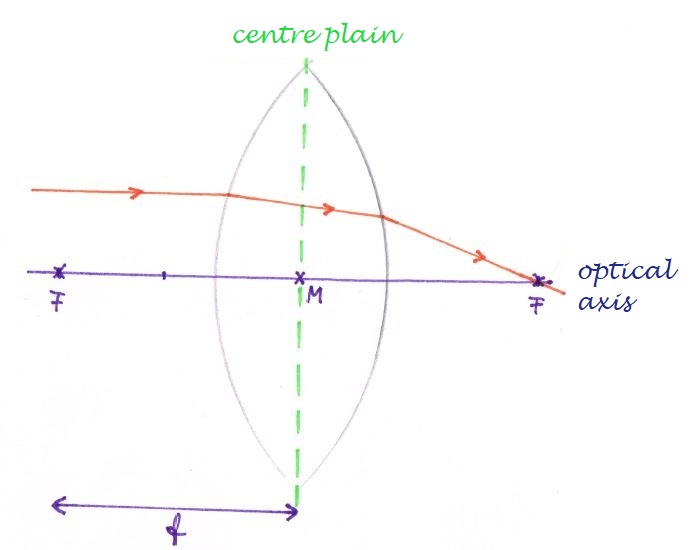Properties of Lenses
|
Find out graphically what the properties of converging and diverging lenses are. As you might know from light refraction in general, light is refracted at interfaces. If light strikes a lens, no matter if converging or diverging lens, light gets always refracted at the inferface of air-glass-air, as you can see in this depiction.
In the picture you can see, drawn in red, the course of a light ray. This representation would be the physically correct one. The refraction actually happens at both surfaces. But to make things easier the refraction is only represented as if it happened at the centre plain of the lens. |

